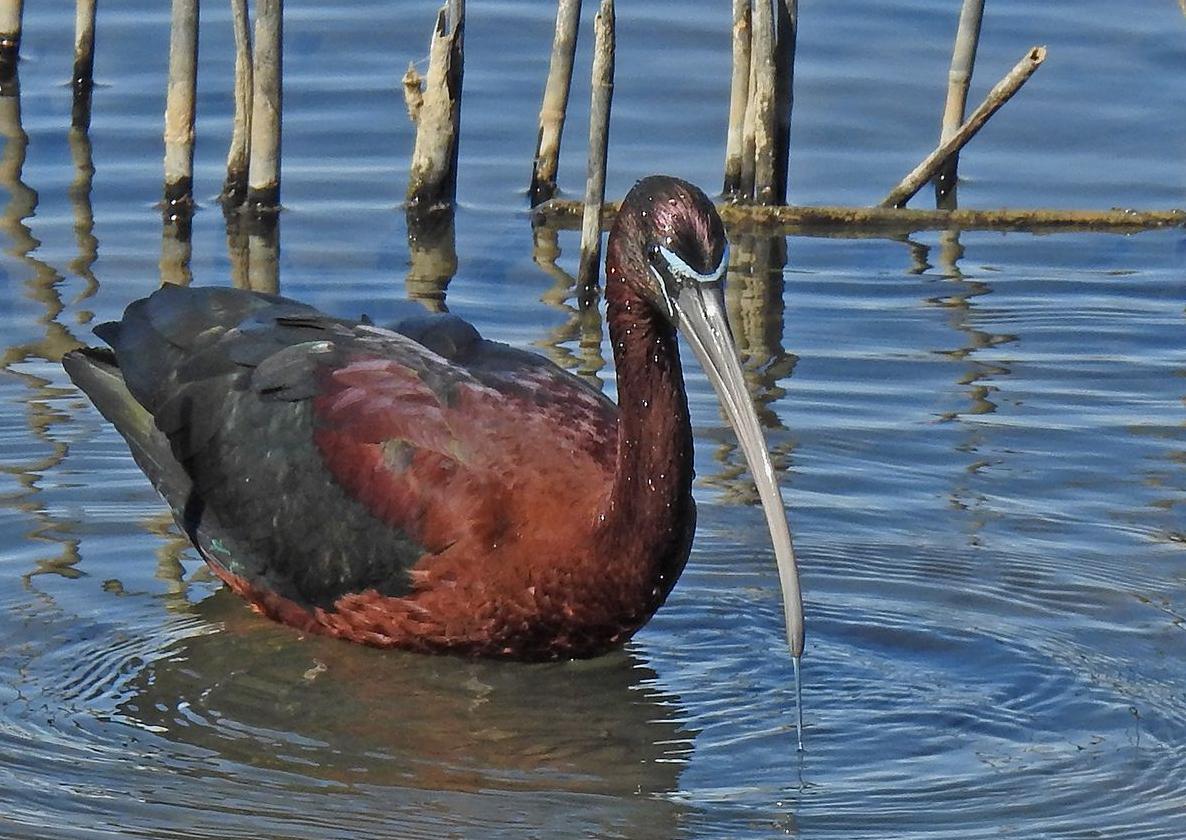The glossy ibis
The Andalucía Bird Society recommends looking out for the Plegadis falcinellus this month
Peter Jones
Friday, 23 May 2025, 12:00
I feel passionate about so many conservation issues, and of course the Andalucía Bird Society is involved at different levels with many of those. It seems now we are all in a war zone, we are fighting on so many fronts to conserve and preserve what we have left, and yet this story of the glossy ibis should give us all hope that things can change for the better.
Wetlands throughout the Mediterranean basin are under severe threat from multiple causes, and I guess this is an issue I feel most strongly about. Reclamation by agriculture, pressure from developers, pollution and deprivation of waters illegally extracted to irrigate industrial plantings of crops such as olives and avocados are causing increasing pressure on what remains of our valuable wetlands. Within our region of Andalucía, the unsustainable planting of more and more olive trees is a huge problem that continues to further decimate already limited water sources, the resulting soil erosion is polluting and silting watercourses and eventually these are combining in reducing the biodiversity of many of the emblematic and most important wetlands within our region.
One of the conundrums I see in the depletion of our wetlands and, quite incredulously, is the increase and range expansion of birds we normally associate with our threatened wetland areas. A few of these that come to mind are little and cattle egret and great egret together with other heron species. And yet, for me at least, the rapid increase in the numbers of glossy ibis is a story unrivalled in recent times and together with their spread across Europe it is a fascinating and uplifting success story.
The resurgence in the Spanish population has been amazing and continues to this day. Breeding has spread away from Doñana and into other areas of Spain. A great many birds have been ringed and apart from the normal metal ring, they have also been ringed with coloured plastic field readable marks. The ringing programme has produced some remarkable sightings, in particular some sightings in the UK of at least 50 individuals and small numbers are now recorded annually in the UK. Sightings of our birds are now commonplace throughout Europe and a few staggering reports have come from the Azores and even the Caribbean.
The success story is not only confined to the region's breeding population but now extends to the huge numbers of wintering birds. These wintering birds are not only confined to the more familiar and traditional sites such as Doñana, but they can now be seen throughout the region. Whilst glossy ibis feed on aquatic insects such as coleoptera and odonata during the breeding season, rice fields are particularly important in the winter, especially during September to November months and the diet of split rice in flooded rice paddies has been a major factor in the recolonisation of Iberia by the species.
Counts of 12,000 birds have been recorded and it is common to see flocks containing many hundreds of individuals.
